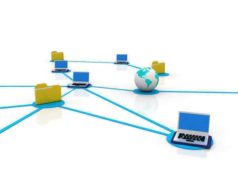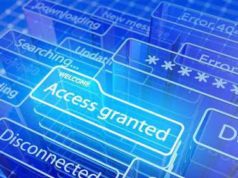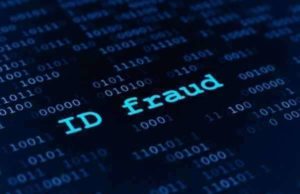
Prosecuting Computer Fraud and Identity Theft
The legal field primarily focusing on the investigation and maintenance with regard to legislation, decorum, legality, and ethics with regard to computer networks – including the internet, electronic commerce (E-Commerce), the online marketplace, virtual social activity, and electronic communications – is classified as ‘Cyber Law’ or ‘Internet Law’. Computer-based fraud undertaken in order to commit identity theft is quite common within the digital age, which can include the illegal and unlawful solicitation through email and websites, misrepresentation of identity, or the attempt to fraudulently assume the identity of another individual.
Measures undertaken in order to provide security with regard to the usage of electronic networks – as well as technologically-based communication systems that rely on the Internet as a means of online communication – may vary in the precautions taken in order to promote lawful Internet usage and legitimate electronic correspondence. When you realize your identity has been stolen contact an identity theft lawyer to acquire legal advice and assistance.
What are Some Methods of Computer Fraud Used for Identity Theft?
Computer-based Identity Theft typically involves perpetrators deceptively assuming the identity of another individual without the expressed consent with the intent of committing a crime; fraudulent and illicit attainment of personal information through the usage of unsecured websites may result in the victims of identity theft undergoing the loss of finances, personal safety, and privacy:
Hacking is the unlawful into the computer terminal, database, or digital record system belonging to another individual; hacking may be undertaken in order to unlawfully attain the personal and private information belonging to another individual
A computer virus is a program may be created to infiltrate a computer terminal belonging to another individual with the intent illicitly obtain information belonging to other individuals
Spyware are computer programs facilitating the unlawful collection of data, allowing individuals the illicit access to the personal and private information belonging to another individual; the use of spyware may result in identity theft.
Methods of Computer Fraud You Should Know: Protecting Your Digital World
Computer fraud is a pervasive threat in the digital age, with cybercriminals constantly evolving their methods to compromise the security and privacy of individuals and organizations. This article provides an overview of various methods of computer fraud, offering insight into how cybercriminals operate and how to protect against these threats.
1. Phishing Attacks
Phishing attacks are one of the most common forms of computer fraud. Cybercriminals use deceptive emails, messages, or websites to trick individuals into revealing sensitive information, such as login credentials, financial details, or personal data. This is achieved through impersonation, social engineering, and the creation of convincing but fraudulent content.
2. Malware Infections
Malware, short for malicious software, includes viruses, trojans, worms, and spyware. Cybercriminals use malware to infiltrate and compromise computer systems, often by luring users into downloading malicious files or exploiting vulnerabilities in software. Once inside, malware can steal data, corrupt files, or damage the host system.
3. Ransomware Attacks
Ransomware is a specific type of malware designed to encrypt a victim’s files or lock them out of their system. Cybercriminals then demand a ransom in exchange for the decryption key. Ransomware can have devastating consequences for individuals and organizations, leading to data loss and financial extortion.
4. Social Engineering
Social engineering is a manipulative technique where cybercriminals exploit human psychology to gain access to sensitive information. This can involve impersonation, preying on emotions, and creating a sense of urgency to deceive individuals into revealing confidential data or granting unauthorized access.
5. Identity Theft
Identity theft involves the fraudulent acquisition and use of someone’s personal information for financial gain or other malicious purposes. Cybercriminals may steal social security numbers, credit card details, or other personal data to commit fraudulent activities, such as opening unauthorized accounts or making unauthorized purchases.
6. Online Scams
Online scams encompass a wide range of fraudulent schemes, including lottery scams, investment fraud, and romance scams. These schemes trick individuals into providing money or personal information in the belief of receiving a benefit that never materializes.
7. Account Takeovers
Account takeovers occur when cybercriminals gain unauthorized access to a user’s online accounts. This often happens through password breaches, credential stuffing, or the use of stolen login information. Once inside, the attacker can exploit the account for malicious purposes.
8. Data Breaches
Data breaches involve unauthorized access to an organization’s or individual’s data, leading to its exposure, theft, or misuse. Cybercriminals may target databases, cloud storage, or network systems to compromise sensitive information, such as customer data or intellectual property.
Protecting Against Computer Fraud
Defending against computer fraud requires a combination of proactive measures:
a. Educate Yourself: Stay informed about the latest fraud methods and scams to recognize potential threats.
b. Use Strong Passwords: Create complex, unique passwords for online accounts and use a password manager for convenience.
c. Enable Multi-Factor Authentication (MFA): Whenever possible, activate MFA to add an extra layer of security to your accounts.
d. Install Security Software: Use reputable antivirus and anti-malware software to protect against malware and other threats.
e. Verify Sources: Confirm the legitimacy of requests for personal information or financial transactions before taking action.
f. Report Suspicious Activity: If you suspect computer fraud, report it to the appropriate authorities or your organization’s IT department.
Conclusion
Computer fraud continues to be a pervasive and evolving threat in the digital world. Cybercriminals employ various methods to compromise the security and privacy of individuals and organizations. By understanding these methods and adopting robust cybersecurity practices, individuals and organizations can better protect themselves against the ever-present threat of computer fraud. Vigilance, education, and proactive measures are essential in maintaining digital safety and security.



























